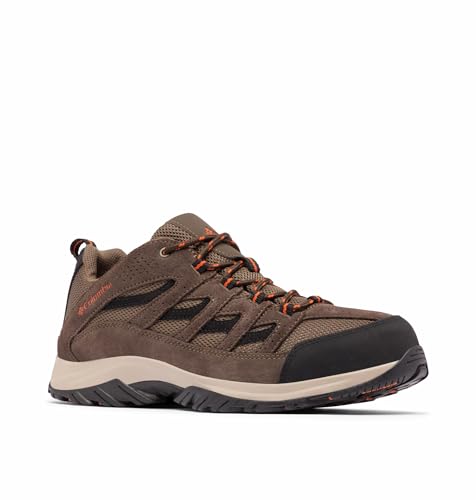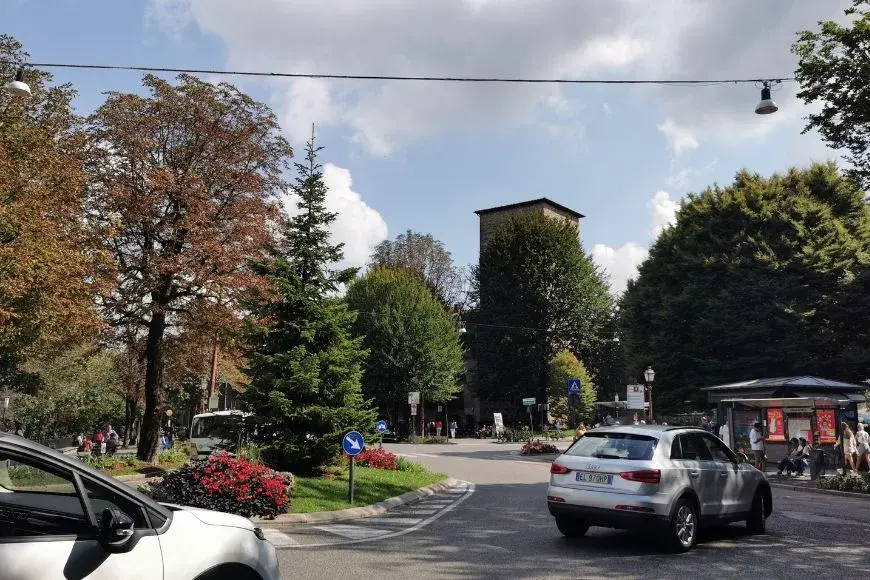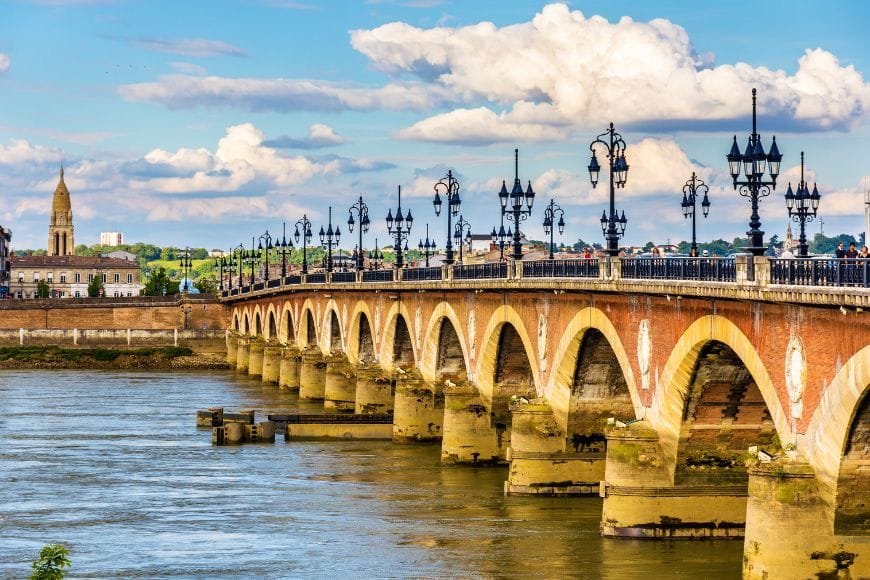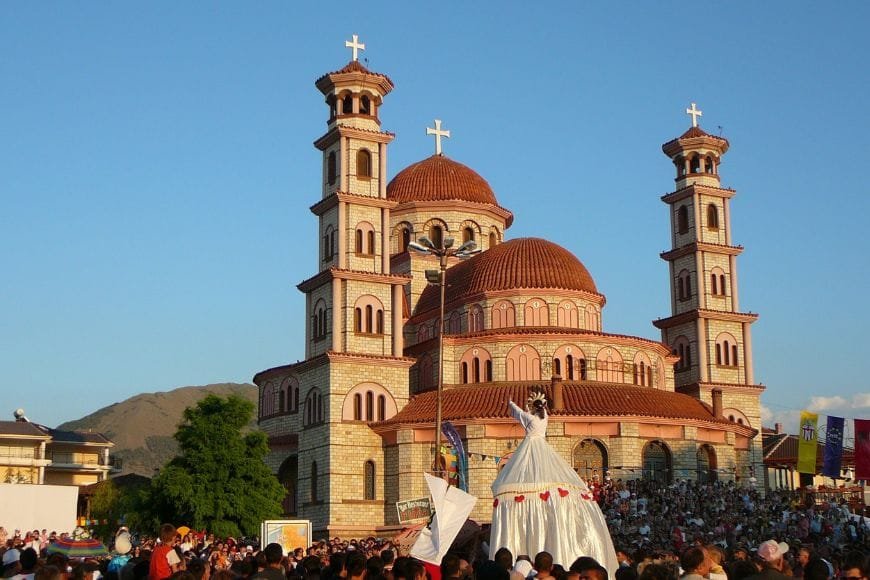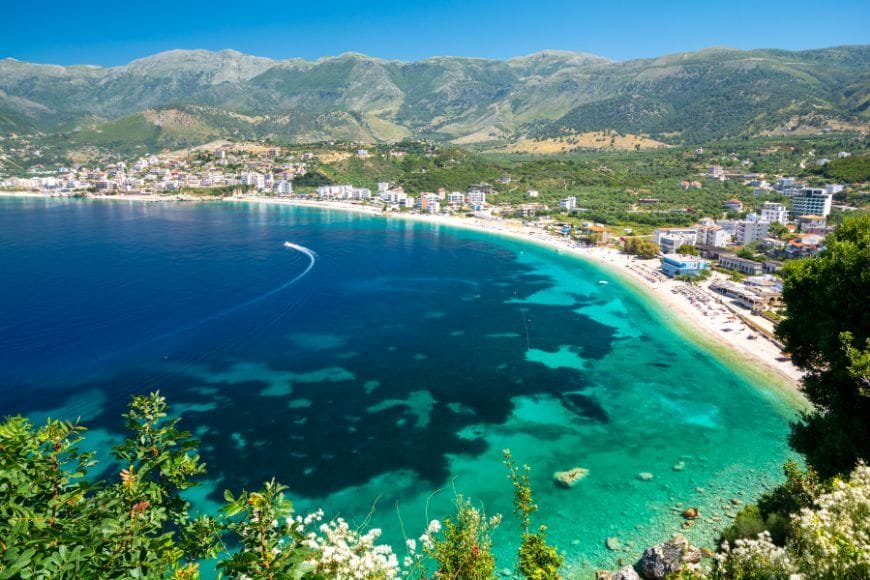How to Visit Plitvice Lakes by Car: Routes, Parking & Tips (2025 Guide)

by Mary | Last Updated December 4, 2025
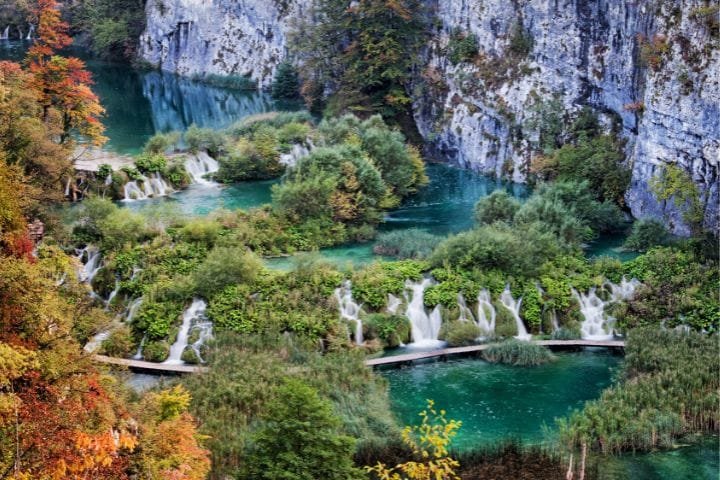
Visiting Plitvice Lakes by car offers incredible flexibility for exploring Croatia’s most famous national park, providing the freedom to combine your waterfall adventure with broader Croatian road trip experiences that showcase the country’s diverse landscapes and cultural treasures.
Having navigated the routes to Plitvice Lakes countless times over the past eight years – from quick day trips during larger Croatian adventures to extended stays exploring every trail and viewpoint – I’ve learned that driving to this UNESCO World Heritage site provides significant advantages over tour buses or public transportation, including flexible timing, secure luggage storage, and the ability to explore surrounding areas that most tourists never discover.
My first visit taught me the hard way about peak season parking challenges when I arrived at 11 AM in July only to find all parking areas full, forcing a two-hour wait that could have been avoided with better planning. That experience completely changed my approach to visiting Plitvice Lakes by car, leading me to develop strategies that ensure smooth visits regardless of season or crowd levels.
Whether you’re planning Plitvice Lakes as your primary destination or incorporating it into a comprehensive Croatian road trip, understanding the driving routes, parking strategies, entrance procedures, and timing considerations transforms your visit from potentially stressful navigation into seamless exploration of cascading waterfalls and pristine lakes.
Best Driving Routes to Plitvice Lakes
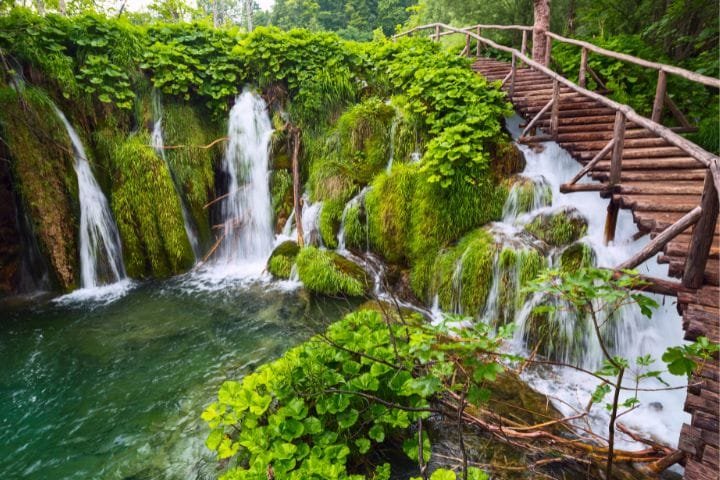
Croatia’s excellent highway system makes Plitvice Lakes accessible from major cities like Zagreb, Split, and Zadar, while well-maintained park roads and organized parking facilities ensure that your visit focuses on natural wonder rather than logistical complications.
From Zagreb: A1 highway and scenic alternatives provide the most straightforward access to Plitvice Lakes, covering approximately 140 kilometers in 1.5-2 hours of driving time. The A1 highway offers excellent road conditions with clear signage directing you to the park exits.
Take the Karlovac exit from A1, then follow D1 toward Plitvice Lakes. This route provides efficient access while passing through traditional Croatian countryside that offers glimpses of rural life and agricultural landscapes.
Scenic alternative from Zagreb involves taking secondary roads through Karlovac and the Lika region, adding 30-45 minutes but providing authentic cultural experiences and spectacular mountain scenery impossible to appreciate from the highway.
From Split: Coastal to mountain transition creates one of Croatia’s most dramatic driving experiences, covering 250 kilometers in approximately 3 hours. The route transitions from the Mediterranean coastline through the Dalmatian hinterland to the mountain forests.
Take the A1 highway north from Split, exit at Gospić, then follow signs to Plitvice Lakes. This approach showcases Croatia’s incredible geographic diversity within a single journey, from sea level to mountain elevations.
During one memorable drive from Split, I watched the landscape transform from olive groves and Mediterranean flora to dense forests and mountain meadows – a transition that perfectly demonstrates Croatia’s remarkable natural diversity.
From Zadar: Efficient coastal approach covers 130 kilometers in about 1.5 hours, providing excellent access from northern Dalmatian coast destinations. Take the A1 highway toward Zagreb, exit at Maslenica, then follow the D1 toward Plitvice.
International border access from Slovenia involves crossing at the Bregana border, then following the A1 highway south to Karlovac exit. From Bosnia-Herzegovina, multiple crossing points provide access, with Bosanska Gradiška offering the most direct route to the A1 highway.
Route planning considerations:
- Zagreb route: 140km, 1.5-2 hours, excellent highway conditions
- Split route: 250km, 3 hours, dramatic landscape transitions
- Zadar route: 130km, 1.5 hours, efficient coastal access
- Scenic alternatives add 30-60 minutes but provide cultural experiences
- Highway tolls approximately €8-15, depending on starting point
🧭 Plan Your Plitvice Drive the Smart Way
Useful for combining Plitvice into a bigger Balkan itinerary.
• Add Plitvice to a Balkan road trip plan with must-know documents and timing → How to Plan a Balkan Road Trip
• Get familiar with toll roads and fees if arriving via Croatian motorways → Balkan Toll Roads Guide
• Understand real Balkan road conditions before taking rural or mountain detours → Balkan Road Conditions Guide
Plitvice Lakes Parking: Complete Guide
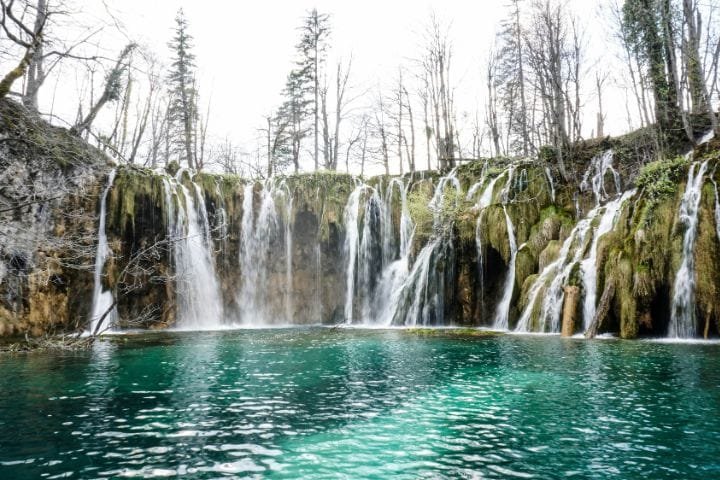
Entrance 1 vs Entrance 2 parking facilities serve different areas of the park with distinct advantages. Entrance 1 (main entrance) provides access to Lower Lakes with larger parking areas, while Entrance 2 serves Upper Lakes with smaller but often less crowded facilities.
Entrance 1 parking accommodates approximately 1,500 vehicles across multiple lots, while Entrance 2 handles about 650 vehicles. Both entrances provide paved parking with clear markings and security patrols.
Peak season parking strategies require arriving before 8 AM during July and August to guarantee spaces, especially on weekends when Croatian families visit alongside international tourists. I’ve learned that Tuesday through Thursday typically offer better parking availability than weekend periods.
Parking fees and payment methods currently cost 7 HRK (about €1) per hour with a daily maximum of 80 HRK (about €11). Payment machines accept Croatian kuna, euros, and major credit cards, though cash provides more reliable service.
My recommendation is always carrying small bills and coins because parking machines occasionally malfunction, and having exact change prevents delays when parking areas fill quickly.
Security considerations include leaving no valuables visible in vehicles and using hotel safes for important documents. Park security patrols regularly, but preventing theft is always better than dealing with consequences.
Overflow parking and shuttle services operate during peak periods when the main lots fill completely. Shuttle buses transport visitors from overflow areas to park entrances, adding 10-15 minutes to arrival time but ensuring park access.
RV and larger vehicle accommodations are available in designated areas at both entrances, though spaces are limited and early arrival becomes even more critical for oversized vehicles.
Parking strategy essentials:
- Arrive before 8 AM during peak season (June-August)
- Entrance 1: larger capacity, Lower Lakes access
- Entrance 2: smaller crowds, Upper Lakes access
- 7 HRK per hour, 80 HRK daily maximum
- Carry cash and cards for payment flexibility
- Use hotel safes for valuables; never leave items visible in cars
Plan Your Trip with Our Favorite Booking Tools
Park Access and Entry Procedures by Car
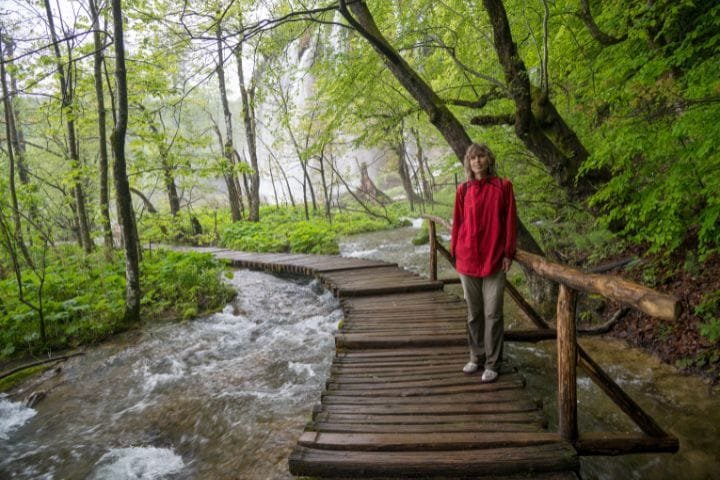
Online ticket booking provides guaranteed park entry and skip-the-line access that becomes essential during peak season when daily visitor limits can sell out weeks in advance. The official park website offers print-at-home tickets and mobile options.
Park entrance locations at both Entrance 1 and Entrance 2 provide ticket validation, visitor information, and access to park transportation systems. Each entrance serves different trail networks, so choosing correctly affects your entire park experience.
Vehicle restrictions within the park prohibit private cars on internal roads, with electric buses and boats providing transportation between different park areas. This system protects the fragile ecosystem while ensuring visitor access to all major attractions.
During my early visits, I made the mistake of thinking I could drive throughout the park – learning that the transportation system actually enhances the experience by eliminating traffic noise and vehicle emissions from pristine natural areas.
Seasonal access variations affect both road conditions and park operations, with winter months (November-March) seeing reduced services and potential weather-related closures. Spring and autumn provide optimal conditions with manageable crowds.
Group booking strategies for families or multiple vehicles can provide discounts and guaranteed access during busy periods. Advance coordination ensures everyone enters together and follows similar itineraries.
Entry procedure recommendations:
- Book tickets online in advance during peak season
- Print tickets or ensure mobile device battery life
- Choose the entrance based on preferred trail routes
- Arrive with valid identification for ticket validation
- Understand that internal transportation replaces private vehicle access
Timing Your Plitvice Lakes Car Visit
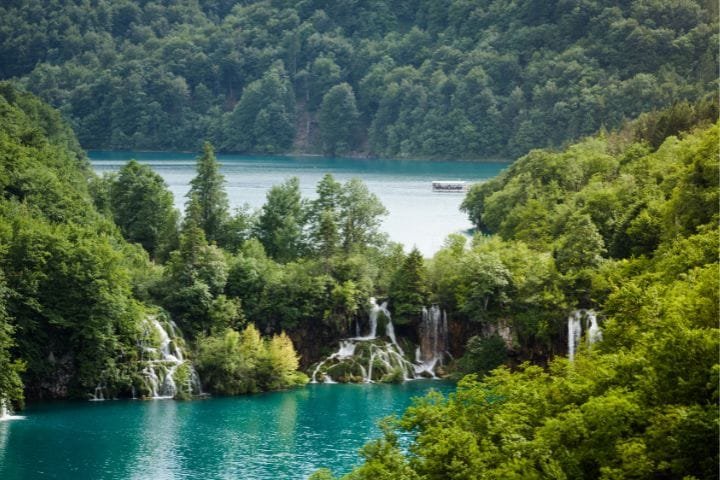
Best arrival times during peak season require a 7:30-8:00 AM arrival to secure optimal parking and enjoy trails before crowds arrive. Early morning light also provides spectacular photography conditions with mist rising from waterfalls.
Seasonal crowd patterns show July and August as the busiest months, with weekends particularly challenging. May-June and September-October offer excellent weather with significantly fewer visitors and better parking availability.
Weather-dependent planning becomes crucial because mountain weather can change rapidly, affecting both driving conditions and park accessibility. Fog, rain, and winter snow can close roads or limit trail access.
I once encountered unexpected fog while driving to Plitvice in October, turning what should have been scenic approach roads into challenging navigation. Having backup accommodation plans prevented the weather from ruining the entire visit.
Photography timing considerations favor early morning (7-9 AM) and late afternoon (5-7 PM) for optimal lighting conditions, though park closing times limit evening photography during shorter winter days.
Optimal visit timing strategies:
- Peak season: arrive before 8 AM, avoid weekends if possible
- Shoulder seasons: May-June, September-October, offer the best balance
- Weather monitoring is essential for mountain driving conditions
- Early morning provides the best photography and fewer crowds
- Flexible planning allows adaptation to changing conditions
Accommodation Near Plitvice Lakes
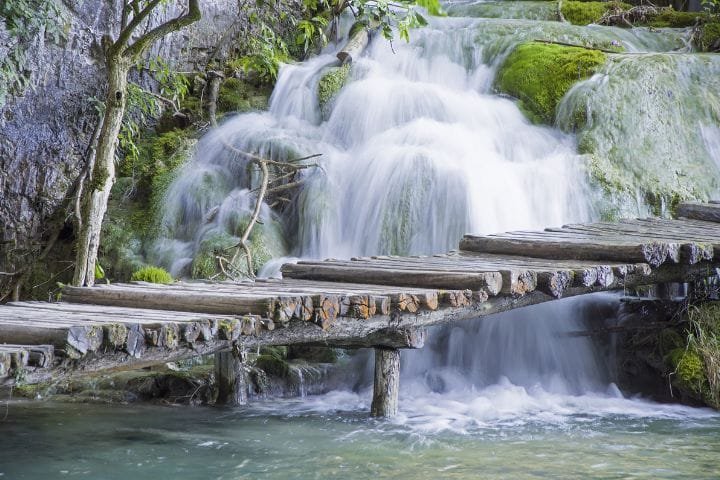
Hotels within walking distance of park entrances eliminate parking stress while providing convenient access for early morning and evening park visits. Hotel Jezero and Hotel Plitvice offer proximity to Entrance 2, while Entrance 1 has fewer immediate accommodation options.
Rural guesthouses and authentic experiences in nearby villages provide genuine Croatian hospitality while supporting local communities. These family-run properties often include home-cooked meals and insider knowledge about the region.
One of my most memorable stays was at a guesthouse in Rastoke village, where the family prepared traditional Lika cuisine and shared stories about life in this mountainous region, which enhanced my understanding of Croatian rural culture.
Camping and RV facilities near the park cater to budget travelers and outdoor enthusiasts, with Camping Korana providing excellent amenities just minutes from park entrances. These facilities offer secure parking and basic services.
Strategic accommodation for multi-day exploration allows thorough park exploration without rushing, visiting during different lighting conditions, and exploring surrounding attractions like Rastoke watermills or traditional Lika villages.
Family-friendly options include properties with secure parking, larger rooms, and amenities that make traveling with kids more comfortable while maintaining easy park access.
Accommodation recommendations:
- Book early for summer visits, especially properties near entrances
- Rural guesthouses provide authentic experiences and local insights
- Camping facilities offer budget options with secure parking
- Multi-day stays allow comprehensive exploration without rushing
- Family amenities are important for traveling with kids
Essential Plitvice Lakes Driving Tips
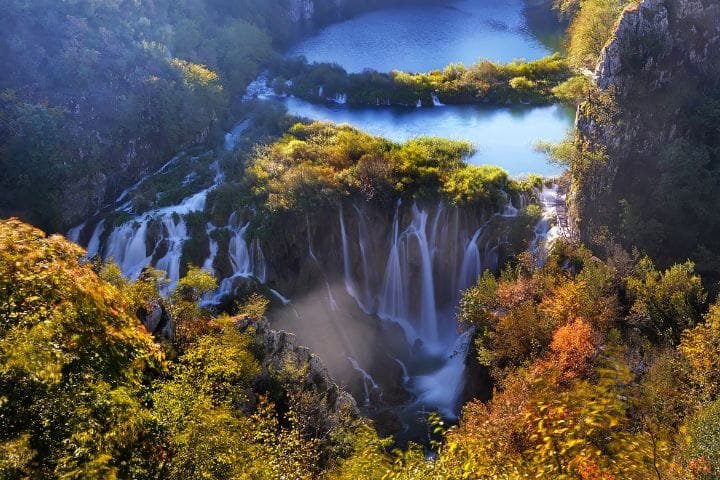
GPS navigation and offline maps work reliably for reaching Plitvice Lakes, though downloading offline maps provides backup for areas with limited cellular coverage. The park is well-signposted from major highways.
Fuel stations and services are available in nearby towns like Korenica and Rakovica, but filling up before arriving ensures you won’t need to leave the park area during your visit. The closest stations are 10-15 minutes from park entrances.
Croatian driving regulations require headlights during daylight hours, valid international driving permits for non-EU visitors, and winter equipment (chains) during certain months. Speed limits are strictly enforced, especially in rural areas.
Vehicle security measures include parking in well-lit areas, using hotel safes for valuables, and never leaving anything visible inside vehicles. Car break-ins are rare, but preventing problems is always preferable.
Emergency contacts and roadside assistance in Croatia include 112 for emergencies and the Croatian Auto Club (HAK) for roadside assistance. Having these numbers programmed into phones provides peace of mind for rural driving.
Essential driving preparations:
- Download offline maps as backup navigation
- Fill the fuel tank before arriving at the park area
- Carry international driving permits and vehicle documentation
- Use hotel safes for valuables, keep vehicles completely empty of visible items
- Program emergency contacts and assistance numbers
Combining Plitvice with Croatian Road Trip Destinations
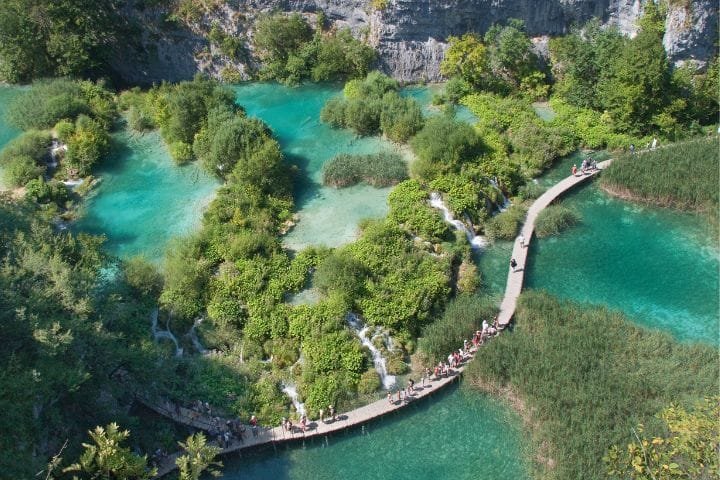
Zagreb to Plitvice day trip possibilities work well for travelers based in Croatia’s capital, though early departure (7 AM) and late return make for long days. Overnight stays near the park provide more relaxed experiences.
Coastal connections to Split and Zadar create excellent road trip combinations, with Plitvice serving as a mountain break during coastal adventures. The dramatic landscape transitions enhance appreciation for Croatia’s geographic diversity.
Multi-park combinations including Krka National Park (waterfalls), Paklenica National Park (mountains), and Kornati National Park (islands) create comprehensive Croatian natural heritage experiences accessible by car.
During one extended Croatian road trip, I combined Plitvice with Krka waterfalls and coastal destinations, creating a journey that showcased Croatia’s incredible natural diversity from mountains to sea within a single week.
Traditional villages and cultural stops near Plitvice include Rastoke with its watermills, traditional Lika villages preserving rural culture, and historic sites that provide context for understanding Croatian heritage.
Wine regions and dining experiences in nearby areas offer opportunities to sample regional specialties, including Lika lamb, mountain cheeses, and local wines that reflect the area’s unique terroir and cultural traditions.
Road trip combination ideas:
- Zagreb-Plitvice-Zadar: cities, nature, and coast
- Plitvice-Krka-Split: waterfalls and Dalmatian culture
- Multi-park tour: comprehensive Croatian natural heritage
- Cultural combinations: traditional villages and historic sites
- Culinary exploration: regional specialties and local dining
🌄 Connect Plitvice with the Croatian Coast
Perfect if you’re continuing your adventure south after the lakes.
• Follow a waterfalls-to-sea route all the way to Split → Plitvice to Split Road Trip Tips
• Explore the Dalmatian coastline — beaches, cliffs, and medieval towns → Dalmatian Coast Scenic Road Trip Guide
• Create a full Zagreb → Split → Dubrovnik journey → Croatia Road Trip Itinerary
What to Bring for Your Plitvice Car Visit
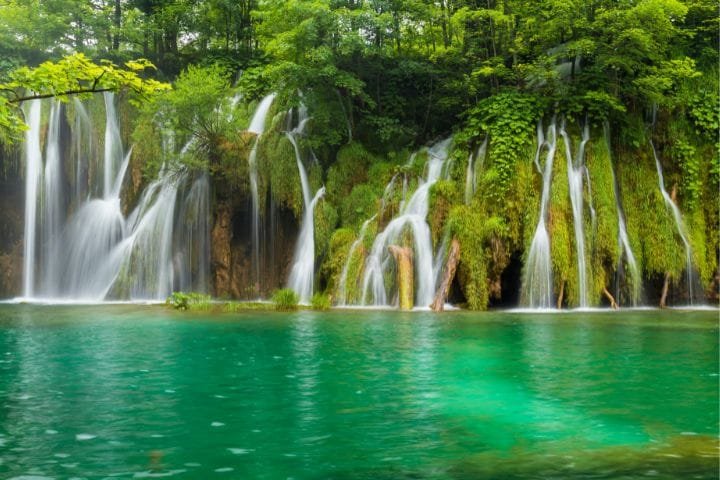
Essential park exploration items include comfortable waterproof walking shoes, weather-appropriate clothing layers, and camera equipment for capturing spectacular waterfalls and lake scenery.
Vehicle emergency kit should contain basic tools, first aid supplies, emergency contact numbers, and winter equipment (chains) if visiting during colder months when mountain weather can change rapidly.
Photography equipment recommendations include polarizing filters for reducing water glare, extra batteries for cold weather conditions, and waterproof protection for equipment near waterfalls and misty areas.
Food and water considerations balance carrying supplies versus using park facilities. Park restaurants and cafés provide meals and snacks, but bringing water and light snacks ensures comfort during longer trail explorations.
Clothing for varying conditions should account for temperature differences between sunny areas and shaded forest paths, plus potential weather changes common in mountain environments.
Packing essentials:
- Waterproof hiking shoes and weather-appropriate layers
- Camera equipment with waterproof protection and extra batteries
- Basic vehicle emergency kit, including winter equipment
- Water and light snacks for trail exploration
- Sun protection and insect repellent for outdoor activities
Alternative Transportation and Hybrid Options
Park and ride facilities from nearby towns like Korenica provide alternatives when parking areas fill during peak season. Local buses connect towns to park entrances, reducing parking pressure.
Organized park tours can be combined with independent car travel, using guided services for park exploration while maintaining vehicle flexibility for broader Croatian adventures.
Public transportation connections from major Croatian cities provide alternatives to driving, though schedules may not align with optimal park visiting times and limit flexibility for exploring surrounding areas.
Bicycle transport options allow cycling within certain park areas and to nearby attractions, with some accommodations providing bicycle storage and local rental options.
Environmental considerations favor carpools, hybrid vehicles, and sustainable transportation choices that minimize impact on this pristine UNESCO World Heritage site.
Transportation alternatives:
- Park and ride from nearby towns when the main parking fills
- Combine guided park tours with independent car travel
- Public transportation is available, but limits timing flexibility
- Bicycle options for eco-friendly exploration
- Consider environmental impact when planning transportation
Plan Your Trip with Our Favorite Booking Tools
Practical Logistics and Visitor Information
Park opening hours vary seasonally, with summer months (April-October) offering extended hours from 7 AM to 8 PM, while winter schedules reduce to 8 AM to 4 PM. Early arrival maximizes exploration time regardless of season.
Entrance fees and payment methods currently range from 55-300 HRK (€7-40) depending on season and age, with online booking providing modest discounts. Payment accepted in Croatian kuna, euros, and major credit cards.
Visitor center services at both entrances provide trail maps, weather updates, photography guidelines, and answers to specific questions about park regulations and recommendations.
Trail planning resources help visitors choose appropriate routes based on fitness levels, available time, and interests. Rangers provide personalized recommendations for optimizing limited visit time.
Photography regulations allow personal photography throughout the park while prohibiting commercial shoots without permits. Drone usage is strictly prohibited to protect wildlife and visitor safety.
Visitor information essentials:
- Summer hours: 7 AM-8 PM, Winter hours: 8 AM-4 PM
- Entrance fees: 55-300 HRK depending on season and age
- Visitor centers provide maps, weather updates, and regulations
- Trail recommendations are available based on individual needs
- Photography allowed, drones prohibited, commercial shoots require permits
Making the Most of Your Plitvice Lakes Car Visit
Visiting Plitvice Lakes by car provides the ultimate flexibility and convenience for experiencing Croatia’s most spectacular natural wonder while maintaining complete control over your schedule, itinerary, and exploration depth. The combination of excellent highway access, well-organized parking facilities, and strategic location makes driving the optimal choice for travelers seeking comprehensive Croatian experiences that extend beyond single destinations.
My years of experience navigating Plitvice Lakes by car have taught me that success depends on understanding peak season timing, advance planning for parking and tickets, and embracing the flexibility that car travel provides for exploring surrounding attractions and authentic Croatian culture.
The park’s accessibility by road opens up possibilities for combining natural wonder with cultural discoveries, regional cuisine, and spontaneous detours that create comprehensive Croatian adventures.
Whether you’re planning a focused day visit or incorporating Plitvice into extended Croatian road trip adventures, proper preparation regarding routes, parking, timing, and logistics ensures that your driving experience enhances rather than complicates your exploration of cascading waterfalls and pristine lakes.
Plan ahead for peak season parking, arrive early for optimal conditions, and prepare for a natural wonder that justifies Croatia’s reputation as one of Europe’s most spectacular travel destinations accessible by road!
🌍 Continue the Journey Beyond Croatia
Top picks if Plitvice is just one stop in a longer Balkan loop.
• Discover hidden historic routes & lesser-known Balkan gems → Balkan Hidden Gems Road Trip
• Add Montenegro for rugged mountains and seaside adventures → Beginner Balkan Routes & Hidden Spots
• Stay safe with rules, etiquette, and border-crossing guidance → Balkan Driving Safety Tips
FAQs on Plitvice Lakes by Car
What is the closest town to Plitvice Lakes by car?
The nearest towns are Rakovica (about 10 km north) and Korenica (around 15 km south). Both offer convenient access to the park with accommodation, food options, and fuel stations.
How far is Plitvice Lakes from Split by car?
Plitvice Lakes is approximately 250 km (155 miles) from Split. The drive takes about 2.5 to 3.5 hours, depending on traffic and your chosen route.
Is there free parking at Plitvice Lakes?
No, parking is not free. Both Entrance 1 and Entrance 2 have large paid parking lots. Fees are typically charged by the hour or day, depending on the season.
Which entrance should I use when visiting Plitvice Lakes by car?
If you’re arriving from Zagreb or the north, use Entrance 1. From Split or the south, Entrance 2 is more convenient. Both entrances offer access to different walking routes.
Is it easy to drive to Plitvice Lakes from major cities like Zagreb or Split?
Yes, the roads are well-maintained and clearly marked. The A1 highway covers most of the route, followed by local roads through scenic countryside.
Can I rent a car to visit Plitvice Lakes for a day trip?
Absolutely. Renting a car is one of the easiest ways to reach Plitvice Lakes, especially if you want flexibility in timing and the option to stop at small villages or viewpoints along the way.
Are there fuel stations near Plitvice Lakes?
Yes, you’ll find gas stations in Korenica, Rakovica, and along the highway before turning onto the local roads to the park.
💬 We’d love to hear from you!
Have questions, tips, or personal travel stories to share? Drop them in the comments below — your insights help fellow travelers plan their adventures too.

